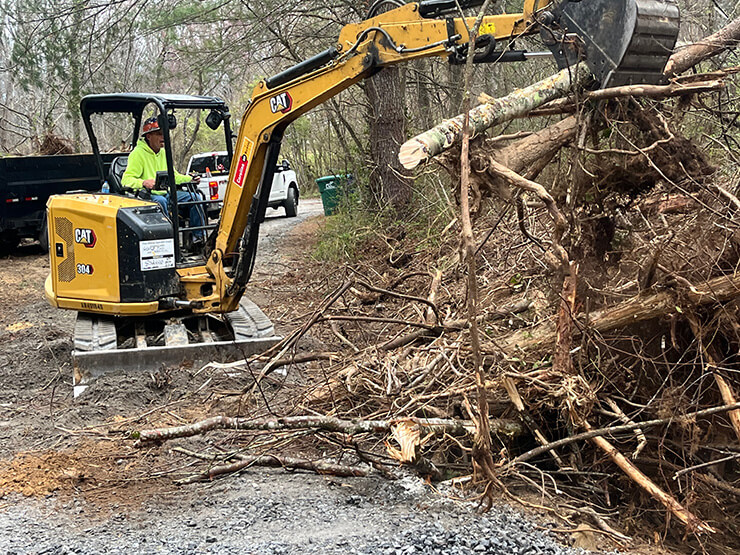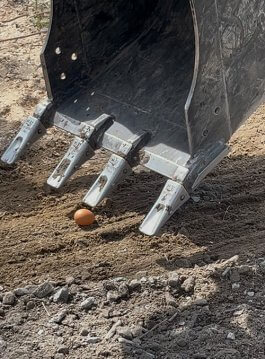Read by Michael Flamel

June—such a wonderful gardening month, especially for a vegetable gardener. (I’m more the veggie than the flower type.) You and your garden are bursting with energy, and Spring crops are a-comin’ in. It’s my favorite month of the year.
Unless something bad happens. Maybe it’s deer. Cabbageworms. Rabbits. Bean beetles. Raccoons. Or the worst of the common garden raiders—groundhogs. I’m not the only person who feels a special enmity toward groundhogs, a.k.a. woodchucks. As Ruth Stout, the doyenne of deep-mulch, “no-work” gardening wrote, “One woodchuck can clean up the garden in one night if the plants are young.” She added, “A woodchuck is extremely distasteful to me; it reminds me of an ugly woman in a mangy fur coat who has spent the night in a gutter.”
And I thought I hated them!
Actually, though, the worst varmint attack my garden ever suffered was from (get this) dairy cows. My neighbor’s fence failed to restrain their herd, and the cows got out and ate—or trampled—nearly everything. (And, no, the manure they left behind was not sufficient recompense.)
A blow like that—seeing your garden violated, finding all your planning and work gone for naught—is truly depressing. It feels so unjust, so upsetting, so personal. It’s not just an attack on your garden. It’s an attack on your own sense of hope.
Well, take that feeling and multiply it by—I don’t know, 1,000(?)—and you’ll have a sense of the violation Hurricane Helene inflicted on Nature’s Garden, our beautiful North Carolina mountains, last Fall. Along with the lives lost and property damage was the sight of pure raw devastation. Giant mudslides. Massive tangles of whole trees. Creeks turned from rippling oases into jagged boulder piles. And all this was everywhere, everywhere you went or looked.
It was truly a traumatic sight. One that crushed the spirit.
Neighbors and complete strangers helped Becky and me with food, fresh water, internet—even building a treetop-style foot bridge so we could walk to our house. (Our creek-turned-torrent had eradicated our driveway bridge.) All that was needed, heartwarming, and encouraging.

But I didn’t realize, even months after our bridge was fixed and life was mostly back to normal, just how much the shattered landscape all around still hung over me. Not until yesterday, when three FEMA workers drove up with their giant trailer and big orange backhoe to remove debris around my creek. Ross, Shannon, and Houston are all relatives from Alexander, Alabama, who have been restoring property in our area seven days a week since the September hurricane. In a few hours, they cleared out two big trailer loads of mangled logs and trunks. They pulled down a huge cherry tree that was bent under other trees like a loaded spring. They cleared up brush, smoothed out open slopes, even sawed big logs into firewood lengths. And they did it with supreme skill. Ross and Shannon each thought he was the better artist with a backhoe. (As far as I was concerned, they were both right.) Shannon said he could pick up a raw egg in his excavator arm’s bucket without breaking it, so I got a fresh egg, put it on the ground—and watched him do it!
They put in a very solid day’s work. When they left, I was almost tearful with gratitude. Then right away, I started planning how I could start restoring Nature’s Garden around the sides of my now clean but bare drive. I was so excited I began talking to myself:
“I’ll put in some native grasses—carex—on the road side of the bridge to help shore up that bare slope.”
“I can plant some Catawba rhododendrons on the house side of the bridge to give it back that dense, moist Appalachian woods feel.”
“And you know what? Then I can start recreating the creekside trail that got obliterated in the storm. That’ll be a big project—I’ve been blocking out even thinking about it for months. But now? Now I can face it.”
Why can I do it now? Because now, I have something all gardeners need before they can even pick up their spades . . .
Hope. ❖


 Previous
Previous



You are still the wonderful warrior I know you to be. Best regards to you and family and love sent to Becky. I wonder how much your tribe has increased by now, Pat!